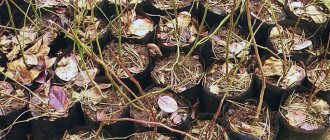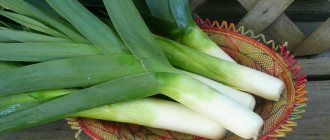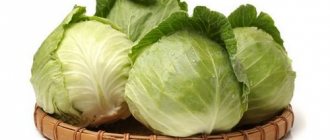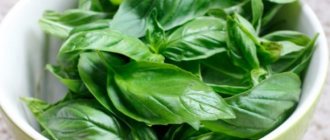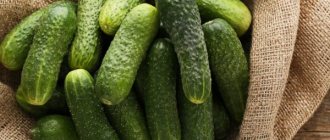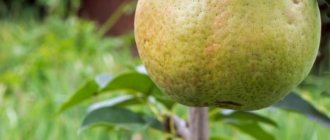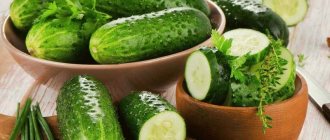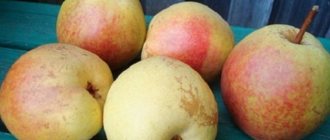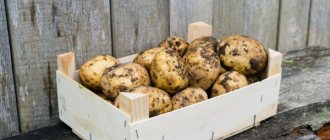Sometimes the pear harvest can be so large that it is not possible to process such a quantity of fruits into homemade preparations for the winter (jam, juice). In addition, pears are a very healthy fruit that is best consumed fresh, without heat treatment. Therefore, it is necessary to properly organize the storage of the pear harvest at home so that you can pamper yourself and your loved ones all winter.
Well, next we’ll talk about how to keep pears fresh for a long period of time, namely what conditions need to be created and, most importantly, maintained.
How to pick pears to last longer
To successfully store pears, they must be collected correctly and on time. The main reason for the failures of gardeners lies precisely in this - not every fruit has excellent shelf life and is able to last at least until mid-winter. Proper harvesting involves the following points:
- Pears are removed from the tree when unripe, which extends their shelf life.
- The harvest is harvested in sunny, dry weather. It is better at noon or in the afternoon to avoid dew. Excess moisture harms the fruit.
- It is desirable that the stalk remains. To do this, turn the fruit counterclockwise and carefully pull it down.
- Harvesting begins from the lower branches, where the fruits are held weaker.
- In a bucket or other container in which the fruits are placed, you need to lay any fabric; it will protect the skin from damage.
It is very difficult to choose the time for harvesting. If this is done too early, the pears will quickly lose their taste, and if it is done too late, they will not last long. The degree of readiness can be determined by the color of the seeds: if they have turned brown, then it’s time to start harvesting. If the flesh near the seeds begins to darken, then you are already late with harvesting, the pears will only be used for processing.
It is advisable not to delay the determination of fruits for storage. Ideally, no more than three days should pass between removing pears from the tree and storing them in storage.
Factors influencing the timing of pear harvesting
To store pears for the winter, the fruits are removed upon reaching removable ripeness, which is divided into initial, medium and full.
Winter pears usually begin to be harvested when fully ripe:
- the seeds turn brown;
- the fruits are easily separated from the tree.
In this state, the fruit has already acquired enough nutrients necessary for respiration, ripening and reaching consumer maturity.
- When harvested early, fruits that do not have time to complete growth wither faster and lose their taste.
- Delays in harvesting can lead to over-ripening and browning of the pulp near the seed nest, as well as freezing and shedding of the fruit.
Tip of the day
Harvest from young trees with poor resistance to stress earlier than from old trees - by 5-10 days.
Storage requirements
If a separate room is used (basement, cellar, insulated shed), all surfaces are disinfected. To do this, first sweep away debris and cobwebs, then spray the surfaces with a lime solution, Bordeaux mixture or copper sulfate. You can use formaldehyde bombs, set them on fire, place them on fireproof objects, then close all the doors tightly. After treatment, the room must be ventilated.
The storage must have the following conditions:
- temperature in the range 0… +2 °C (optimal for most varieties);
- humidity 90–95%;
- lack of sunlight.
You cannot store pears in plastic and iron containers; wooden boxes are ideal in this regard. They must be treated with sulfur vapor; this will protect the pears from mold.
Medium-sized fruits are best stored. They need to be cooled before storing. To do this, you can simply leave the boxes outside overnight, preferably under a canopy.
Undesirable neighborhood
The first thing to clarify is that vegetables and fruits should be stored separately from each other. Such proximity will have a bad effect on the taste and smell of fruit.
And pears, like some other types of fruits, contain the substance ethylene, which accelerates ripening, which means it can spoil nearby products.
So, pears should not be adjacent to the following fruits:
- Potatoes - in this case, the process of germination will accelerate, and the pears themselves will taste like starch;
- Carrot;
- Cabbage;
- Celery.
But you can store pears with plums, peaches and apples.
How to store fruits and berries:
Methods for storing pears in an apartment
Pears, unlike apples, do not have a waxy coating, and therefore are stored very poorly, especially in an apartment. The temperature here is much higher than recommended, and therefore, in a week at best, the fruits will become unsuitable for food. There are few storage options in the apartment:
- Place the pears in the refrigerator. You can store some types of pears for 3-4 weeks.
- Place in a box and put it on the balcony or loggia. Protection from precipitation and systematic monitoring of the condition of the pears are mandatory. Shelf life is approximately 2-3 weeks, depending on weather conditions.
- Dry. Dried fruits can be stored for about a year; they can be used for confectionery purposes and for making compotes.
You can try freezing the pears. If you simply cut them up and put them in the freezer, the taste will be ruined, and they will only be used for compotes. But there are several freezing methods that few people know.
You can take a board that will easily fit into the freezer, cover it with paper or cling film, cut the pear into slices and arrange them so that they do not touch. To protect against darkening, the surface is sprinkled with lemon juice. The board is put in the freezer, and a day later it is poured into a bag.
Second freezing option:
- Cut the pears into slices and soak in boiling water for 3 minutes.
- Remove from water and transfer to serving containers.
- Prepare syrup - dissolve 400 g of sugar in 200 ml of water.
- Pour syrup into containers until fruit is completely covered.
- Place in the freezer with the fast freeze mode set in advance.
Pears prepared in this way can be stored until spring and used as needed.
It is better not to store pears in bags outside the refrigerator: there is a high risk of condensation forming, due to which the fruits will quickly disappear. Thermal boxes are also bad helpers when storing pears.
Variety selection
The maximum shelf life of pears directly depends on this. For long-term laying, do not use summer and autumn options, since even if suitable conditions are created, they will not lie for a long time. Select late varieties; they are best suited for these purposes and have the following differences:
- Not as sweet and juicy as summer ones. But the taste improves over time.
- They do not spoil for a long time, the minimum shelf life is usually a couple of months. But only on condition that the skin is not damaged.
- The pulp is much denser. Therefore, late versions are excellent for any preparation; during heat treatment they do not lose their shape and taste.
- You should not eat immediately after collection. The fruits are very hard and the taste is mediocre. But over time, when the skin turns yellow and the surface becomes a little softer, the taste improves.
Advice!
To understand what kind of variant is growing on the site, you need to pick the fruit in the second half of September and try it. If it is still hard and the flesh is a little tart, then you can use the pears for storage at home or in the cellar. Varieties that last a long time are divided into three groups, each of them has its own characteristics and shelf life. Before purchasing seedlings, it is best to check whether the variety is zoned in the region. For midland pears, the following options are used:
- Early winter. They combine good taste and are stored until the end of December or mid-January. The most popular are Bera, Elena, Noyabrskaya, Nart and Curé.
- Mid-winter. Under good conditions and proper preparation, they last until February or even March, tolerate transportation well, and are less susceptible to temperature changes. These include Kyrgyz Winter, Olivier de Serre, Pass-Crassan, and Saratovka.
- Late winter. They are stored until May, take a long time to develop taste, so they are almost not consumed until the New Year. The most common varieties are Dekanka winter, Tikhonovka, Izumrudnaya, Maria and Izyuminka Kryma.
Different regions may have their own options, adapted to the climatic conditions of the area. They are often grafted onto frost-resistant rootstocks. And if there is no room for several trees, then the easiest way is to graft 2-3 species onto one plant in order to consume fruit from late autumn until next spring.
Storage options in the basement or cellar
It is easier to store pears in a cellar than in an apartment, but long-term storage is out of the question. At best, you can hope to get fresh fruit in mid-January. Only sorted medium-sized pears are placed in the cellars, free of rot, damage to the skin, dents and other defects, and always with the stem.
It is important to create the desired humidity. The easiest way to do this is to place a container of sand in the middle of the room, which is periodically moistened. Excessively dry air is even more harmful to pears than high humidity - this is how they quickly dry out, become wrinkled and tasteless.
Pears are laid out on racks in one row so that the fruits do not touch each other. You can cover the top with spruce branches, but be careful not to damage the skin.
Storage in boxes
If there are no shelves or they are occupied, you can put the pears in wooden boxes, in no more than two layers. In this case, approximately 5 cm should remain to the top to prevent accidental damage to the pears. It is important that the fruits do not come into contact with each other, and sand is best suited for this purpose.
Proceed as follows:
- They take wooden boxes and fumigate them with sulfur.
- The sand is calcined over an open fire or on an electric stove. You can take a mountain or river one.
- As soon as the sand has cooled, pour it onto the bottom of the box. To prevent him from waking up through the cracks, you can first lay down unnecessary newspapers.
- Pears are placed on the sand with the stems up so that the distance between the fruits is 2-3 cm.
- Add sand to hide the stalks and lay the row of pears again.
The second row is also covered with sand and removed to the darkest place in the basement. Usually, large volumes of pears are not stored this way - it is difficult to control the quality of the fruit, so a lot is wasted. But it’s quite possible to save 1-2 boxes of 10 kg each.
Instead of sand, you can use wood ash, moss or fern leaf. There is information about the successful use of onion peels for filling. The main thing is that the material is either hygroscopic or bactericidal.
What containers to use
The best container for storing pears is a clean, pre-smoked wooden box . Avoid using plastic containers or wicker baskets as these can quickly spoil the pears. If the room is cool and dark, with a good level of ventilation, you can use shelving.
It is important to remember that even in winter, fruits must have access to fresh air. If there are no cracks or holes in the box, you should make them yourself.
The bottom and walls of the container are covered with paper. The fruits should be distributed so that there is a distance between them, and the fruit cuttings are directed upward. If there is not enough space, you need to make a masonry in 2 layers, separated by paper or sawdust. It is highly undesirable to place different varieties in one container.
Methods of storage in the ground
If there is no cellar or basement, pears can be stored in the ground. We have found two ways in which these fruits are perfectly stored almost all winter. True, you will have to work hard - organizing storage is difficult.
Pears in the hole
The method can be used in areas with deep groundwater or if the area is located on a hill. To preserve the crop, they dig a hole, the length and width of which are arbitrary, and the depth is 120-150 cm. As soon as the hole is dug, they begin laying the fruit according to the following scheme:
- The pears are placed in boxes, which are lowered into a hole and placed one on top of the other so that there is half a meter left to the top.
- A pipe with a diameter of 100 mm or more is placed in the center. Its lower end should be raised 50 cm from the ground.
- The top is covered with slate, boards and other available materials, and then covered with earth in a layer of at least 40 cm.
We need to finish the work before the first frost. Then you can open the hole, take out the box and immediately restore the soil layer. Pears can be stored this way for several months, but can be damaged by rodents.
Storage in the ground
This method is less labor intensive. They dig a hole up to half a meter deep, the width and length are arbitrary. The pears are carefully sorted; whole, defect-free fruits are packed in plastic bags, which are lowered into a pit. The bags are placed in one row, with a layer of spruce branches on top to scare off animals that love pears. The final stage is to pour the soil in a layer of 25-30 cm. This way you can store pears until the New Year holidays.
It is difficult to find a hole in the fallen snow, so a long stake is stuck into its bottom, which will serve as a guide in the future.
Drying pears and subsequent storage
The methods listed above are risky; at best, we can talk about storage for 2-3 months. To preserve for a longer period or in larger quantities, it is better to dry the fruits. This can be done in the sun, in the oven or in an electric dryer (dehydrator). Each option has its own nuances:
- When drying in the sun, it is better to soak each slice in 1% wine vinegar so that the slices are not dark. Dry until ready in a place accessible to sunlight, you can cover with gauze to prevent flies from landing.
- When drying in the oven, first keep the slices at a temperature of 55-60 ° C for two hours, then at a temperature of 80 ° C until the pears reduce in size. After which the temperature is reduced to the original temperature and dried until ready.
- If the pears are placed in the dryer, then the temperature is set to 70 ° C and kept for 15-20 hours, depending on the model of the device and the thickness of the slices.
Store drying in fabric bags, glass jars or plastic bags for no more than a year. It is important that there is no high humidity in the room, and that there are no products with a strong odor nearby, which dried pears absorb perfectly.
From time to time you need to go through the drying process and throw away spoiled specimens.
